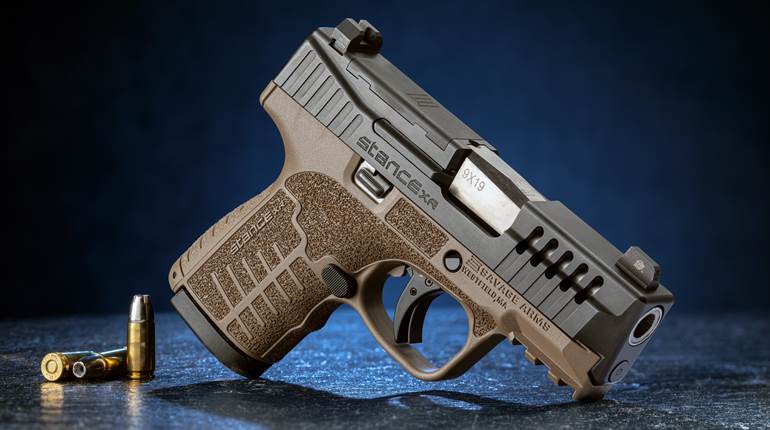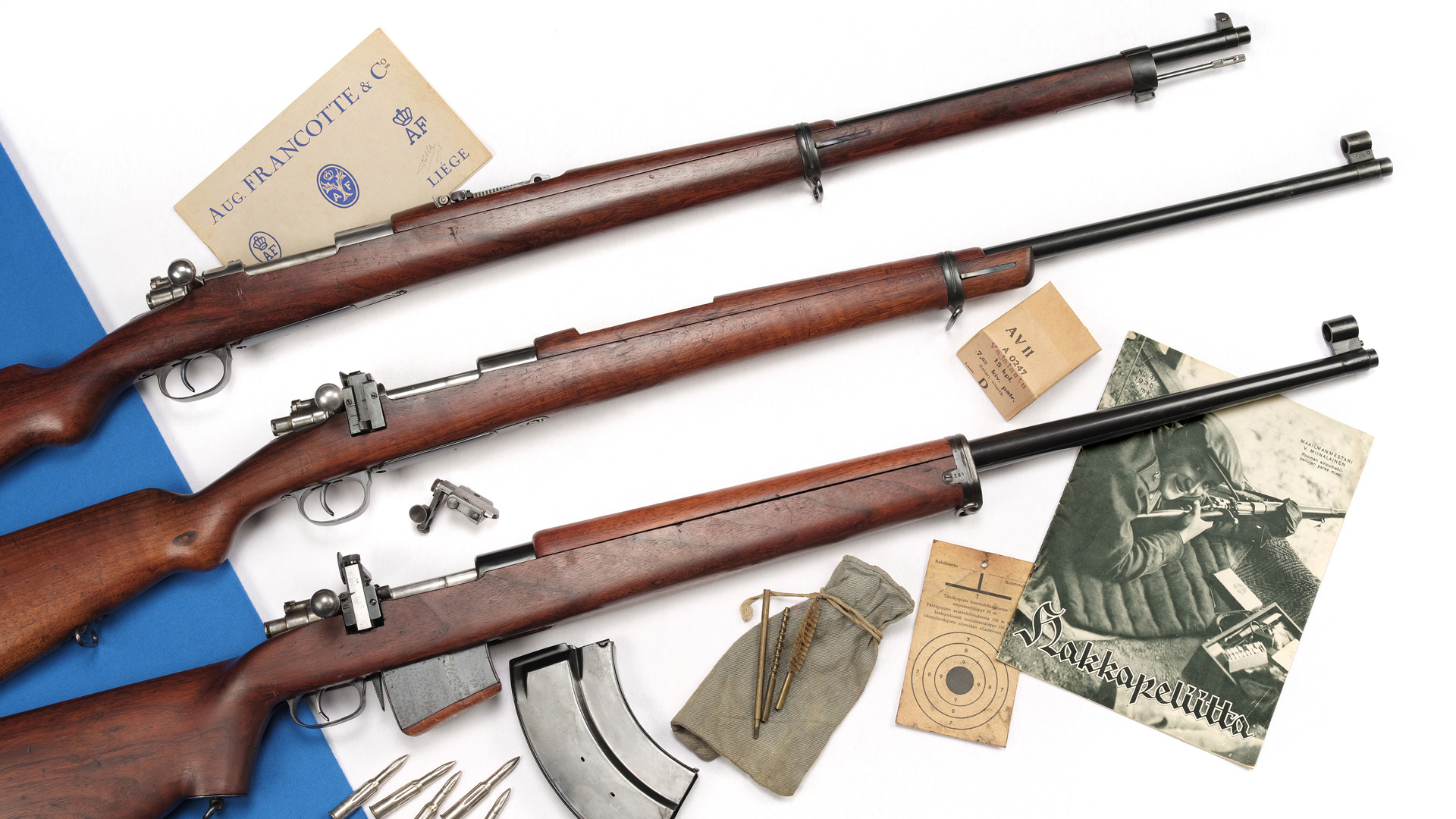
Owing to more than a century of pistolcraft, Walther Arms of Ulm, Germany, has garnered a reputation for producing top-quality semi-automatic handguns, such as those in its PPQ series. However, with suggested retail prices starting at $649, said full-size pistols are beyond the reach of many shooters and personal-protection practitioners. Those clamoring for the PPQ M2—but without the purse strings to make the purchase—will find the ergonomically and aesthetically similar Creed to be a lower-cost path to Walther ownership.
Also in 9 mm Luger, outwardly the recoil-operated Creed isn’t too unlike its PPQ sibling; however, beneath the surface are some noteworthy differences. Foremost, whereas the PPQ M2 is a striker-fired pistol, the hammer-fired Creed employs a pre-cocked, double-action-only trigger system featuring a snag-free bobbed hammer. Among the benefits of the latter is a consistent trigger pull weight.

Similar to a two-stage trigger, the shoe travels rearward approximately 3/16"—all the while the hammer is being cocked—before hitting a wall, after which a very short pull releases the hammer and fires the pistol. According to Walther’s promotional literature, the trigger pull is reported to be 6 lbs, 8 ozs. Using a Lyman Digital Trigger Pull Gauge, it averaged 4 lbs., 2 ozs., confirming our suspicions that the pull weight on our sample was indeed lighter than advertised. Overtravel was nonexistent, and the reset distance was about 1/4". Unlike its PPQ M2 sibling, there’s no articulating blade safety projecting from the Creed’s trigger shoe.
Southpaws will surely bemoan the absence of bilateral controls; of the rotary takedown lever, smallish slide stop (when compared to that of the PPQ) and oversize magazine-release button, only the latter can be reversed for lefties. The Creed has three internal safeties: two drop safeties and a firing pin block. A nice attribute of the Creed’s design is that the slide can be removed without pulling the trigger.
Par for the course, the frame is made from reinforced polymer. Notable, however, is a prominent swell on the backstrap that may be a problematic for some shooters. Exacerbating the problem is the deeply recessed beavertail. Some with slight hands found the Walther’s grip too large and/or uncomfortable. This was confirmed on the range. In an effort to keep the price down, the Creed doesn’t have interchangeable backstraps.
The sides of the grip, frontstrap and backstrap are adorned with a raised, cross-directional stippling pattern to enhance purchase. Grip is further improved by a series of finger grooves. As we range tested the Creed in sub-freezing temperatures, we can attest to the trigger guard being sized sufficiently for a gloved finger. The dustcover has an underside rail for the addition of accessories.
To protect against corrosion, the slide is treated with Tenifer, while pairs of deep cocking serrations fore and aft of the ejection port ease the cocking process. The slide’s beveled edges not only aid in drawing and re-holstering, but also reduce printing. Topping the slide are low-profile sights in the three-dot configuration. While the 0.145"-wide post front is fixed, the rear is drift-adjustable for windage. Measuring 0.185" wide, the notch in the rear sight is conducive to rapid target acquisition, but not so much for accurate grouping from the bench. More on that later.
Like the slide, the 4" barrel is Tenifer-treated, and a cutout in the rear permits visual confirmation as to the condition of the gun (i.e. loaded or not) without retracting the slide. To ease the manufacturing process, the Creed’s barrel is comprised of three separate components: a locking block, a feed ramp and the barrel itself. Extraction is via an oversize extractor mounted alongside the breechface, while ejection is by way of an ejector projecting upward from the frame.
Lastly, feeding the Creed are Italian-made, 16-round magazines with steel bodies and polymer floorplates. The floorplate works in conjunction with cutouts in the magazine well to allow the shooter to grasp and pull the magazine out if need be. Witness holes on both sides give quick visual confirmation of the rounds remaining.
Range work began with accuracy testing from a sandbag rest at 25 yds. using one practice and two defensive loads: SIG Sauer 115-gr. FMJ; Hornady Critical Defense 115-gr. FTX; and Federal Premium Personal Defense 124-gr. HST JHP. Averages were tallied for five consecutive, five-shot groups.
None of the loads stood out accuracy-wise during the test, as the average for each load was slightly more than 3½", and at least one five-shot string exceeded the 4" mark with each. That is by no means Bullseye pistol accuracy, but it is certainly adequate for personal protection at practical distances.
With accuracy testing completed, we next transitioned to rapid-fire drills on paper and reactive steel, such as dueling tree and plate-rack targets. We found hitting targets in rapid succession to be relatively easy, which is desirable in a defensive pistol, though discomfort in the palm/web area of the hand increased with each subsequent box of ammunition expended. Again, hand-to-grip fit is critical. From the factory, the gun consistently shot high and left.

During testing, there were no failures to feed, fire, extract or eject. Pressing the magazine-release button quickly cleared the well for the next one, though one magazine wouldn’t lock into place without being forcefully inserted. The other magazine had no such issues. Magazine problems aren’t altogether uncommon, regardless of the firearm manufacturer. The lightweight trigger pull was a nice touch, though we found the reset to be a tad too long for those who are reset-style shooters (as opposed to those who let the trigger fully out).
Realistically, the Walther Arms Creed is as capable a personal-defense handgun as its PPQ M2 siblings, but can be had at a significant savings. The only difference is the loss of a few features that aren’t necessarily required—especially by right-handed shooters. That’s money that can be used for a holster, ammunition and more range time.






































